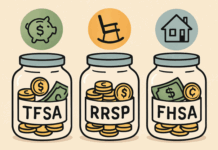Running a small business means dealing with constant changes in revenue. Few things impact success as directly as business cash flow. This is especially true when sales fluctuate across the year.
Seasonal swings in consumer behavior can either fill the registers or leave them gathering dust. From slow winters to booming summers or a holiday rush that turns into a January slump, timing can create both opportunity and pressure.
Staying ahead of these shifts takes planning, adaptability, and a clear view of incoming and outgoing funds.
Recognizing the Shape of Your Sales Cycle
Each business has a pattern. For some, it’s tied to weather: ice cream shops fill up in July, while snow removal services peak in December. For others, timing hinges on shopping habits.
Retailers often prepare for the holidays starting in early fall, hoping for a strong fourth quarter to carry them through quieter months. Restaurants, tourism companies, and even service-based industries tend to follow similar ebbs and flows.
The secret is to recognize your specific cycle. Historical sales data, expense trends, and customer behavior reveal more than guesswork.
Looking at prior years shows when revenue usually climbs and when it slows. Patterns will emerge that guide better decisions. By comparing sales against fixed costs, you can identify when pressure on your cash reserves is highest.
Setting Aside Cash During Peak Seasons
One of the most effective strategies is building a buffer. When revenue climbs, it’s easy to focus on expansion or reinvestment. Yet, this is often the best time to hold on to a portion of profits.
Putting money aside during peak months can reduce stress later. Think of it as a reserve that keeps the business running during leaner periods. Rent, payroll, utilities, and inventory costs continue, even if foot traffic slows. This reserve acts as insurance against future shortfalls.
Planning for these dips during strong seasons helps avoid reactionary decisions later. Short-term fixes can be costly. Instead, smart financial habits during times of abundance protect stability when things cool down.
Controlling Costs Without Compromising Quality
Expenses don’t always shrink just because income does. Some bills are predictable, while others rise unexpectedly. In slower seasons, reviewing spending habits helps maintain stability. Cutting back on non-essential purchases, renegotiating supplier terms, or pausing non-urgent upgrades may preserve available funds.
That said, cost control should never undercut the value you bring to your customers. Consistency builds trust. If quality drops, it can damage your reputation even after the season rebounds. The goal isn’t to trim everything; it’s to identify which costs support long-term growth and which ones can wait.
Flexible Staffing and Seasonal Hiring
Labor is one of the largest ongoing expenses for most businesses. For those that experience sharp peaks and valleys throughout the year, staffing needs change along with customer demand. Hiring part-time or temporary workers during busy months creates breathing room. Then, during slower periods, maintaining a leaner staff helps reduce pressure on your bottom line.
This kind of staffing strategy requires foresight. Training and onboarding take time. So does building a culture where all workers feel valued, even if their job is temporary. Thoughtful scheduling and communication support a healthy workplace, which reflects well on your brand regardless of the season.
Marketing Adjustments Throughout the Year
Customer attention shifts with the calendar. Smart marketing matches your audience’s mindset. During busy seasons, outreach may focus on speed, convenience, and immediate availability. When business slows, your message can shift toward community, loyalty, or upcoming events.
This is not just about advertising volume; it’s about adjusting tone and timing. Seasonal promotions, holiday-themed offers, and timely outreach can drive activity even during expected dips. Planning campaigns in advance also prevents last-minute spending when business cash flow is tight. Being strategic here keeps your business in front of your audience all year long.
Smart Use of Business Financing During Slower Periods
Some businesses turn to business financing to support operations during off-peak months. This doesn’t always mean long-term debt or complex borrowing. Flexible financing solutions that match your revenue cycle may provide peace of mind. The point is to select options that reflect your seasonal needs without adding burdens during recovery.
When exploring funding solutions, it’s important to focus on terms that offer room to breathe. Some options allow for adjustable payments tied to monthly revenue. This means repayment lines up with income, not a fixed schedule that might be hard to meet when sales drop. Others offer fast approval and don’t weigh credit scores heavily, which can be helpful for newer businesses or those rebuilding after past slow periods.
Financing isn’t just a last resort. Used wisely, it can fuel marketing during off-seasons, help launch a new product ahead of the next boom, or give you a cushion while waiting on invoice payments. However, timing and structure matter. You want tools that support growth without locking you into long-term commitments that don’t match your revenue flow.
Planning Inventory Around Real Demand
Inventory that doesn’t sell ties up cash. Overordering during peak seasons can leave you with excess stock, which may require storage or discounting. On the other hand, ordering too little could mean missed sales. Finding the right balance is an ongoing challenge.
Using past sales data helps forecast demand more accurately. This isn’t just about what sold, but when and how fast. Good timing in restocking helps to meet demand without overspending. During slower months, consider running lean. Smaller batches, pre-orders, or supplier agreements with flexible fulfillment can keep inventory costs in check.
Watching Accounts Receivable Closely
Money owed but not yet collected can create major pressure during slow seasons. Outstanding invoices don’t pay the bills. Making it easier for customers to pay on time improves business cash flow. Clear payment terms, early payment incentives, and regular follow-ups encourage timeliness. Using specialized tools can help small businesses manage payments more effectively, especially during peak seasons with service spikes. For example, invoicing software for pest control businesses can automate billing, track payments, and ensure timely follow-ups, which is particularly useful during busy periods.
Some businesses also consider invoice financing or factoring, which can help access cash tied up in receivables. This option can be useful in a seasonal model, where outstanding payments delay your ability to plan for upcoming expenses. Still, these tools should be selected with care, keeping cost and timing in mind.
Avoiding the Trap of Reactive Decisions
When business cash flow becomes tight, it’s tempting to make sudden moves. Slashing prices, launching surprise sales, or pulling back marketing too sharply can hurt future performance. Quick reactions may feel productive, but often create long-term setbacks.
A better approach is building a proactive plan based on your known sales cycle. This allows you to make calm, thoughtful decisions, even when facing pressure. Scenario planning can help, too. By preparing for a range of outcomes, from better-than-expected seasons to downturns, your business remains agile without scrambling.
Using Seasonal Opportunities to Build Long-Term Strength
Busy seasons aren’t just about making quick sales. They also offer chances to build your customer base, increase loyalty, and collect feedback. Capturing this momentum helps reduce the sting of slower months.
Tools like email marketing, loyalty programs, and post-purchase follow-ups keep customers engaged even when they’re not actively buying.
Likewise, slower seasons can be a time to refresh internal systems, plan new offerings, or invest in staff training. Rather than seeing these months as a setback, consider how they might support future growth. Every season brings opportunity if you’re watching closely.
Keep Your Foundation Strong Year-Round
Handling seasonal highs and lows starts with strong financial habits. Know your numbers. Track your expenses. Recognize what drives your revenue. These fundamentals build a foundation that allows for flexibility, not panic. When you’re prepared for the cycle, you can move through it with purpose.
There’s no one-size-fits-all solution. Some businesses will need outside funding. Others might thrive by adjusting schedules or delaying expansion. What matters most is having a plan that fits your reality, not someone else’s.
Consistency Over the Calendar: Staying Ahead of Seasonal Swings
The best way to manage seasonal shifts in business cash flow is not to chase them, but to stay one step ahead. By studying patterns, setting aside reserves, adapting staffing, and checking out smart business financing tools, your business can remain stable even when sales fluctuate.
The goal isn’t just to survive each dip, but to grow stronger with each cycle.
Find a Home-Based Business to Start-Up >>> Hundreds of Business Listings.














































